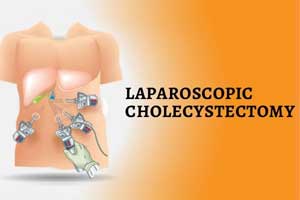- Home
- Editorial
- News
- Practice Guidelines
- Anesthesiology Guidelines
- Cancer Guidelines
- Cardiac Sciences Guidelines
- Critical Care Guidelines
- Dentistry Guidelines
- Dermatology Guidelines
- Diabetes and Endo Guidelines
- Diagnostics Guidelines
- ENT Guidelines
- Featured Practice Guidelines
- Gastroenterology Guidelines
- Geriatrics Guidelines
- Medicine Guidelines
- Nephrology Guidelines
- Neurosciences Guidelines
- Obs and Gynae Guidelines
- Ophthalmology Guidelines
- Orthopaedics Guidelines
- Paediatrics Guidelines
- Psychiatry Guidelines
- Pulmonology Guidelines
- Radiology Guidelines
- Surgery Guidelines
- Urology Guidelines
Dexmedetomidine Infusion effectively controls pain during Laparoscopic Cholecystectomy

Intraoperative DEX infusion is safe and effective for improving analgesia during and after laparoscopic cholecystectomy(LC), says study. Kateryna Beilka conducted the study to evaluate the efficacy and safety of DEX infusion during elective laparoscopic cholecystectomy (LC) the results of which appear in the journal BMC Anesthesiology.
Laparoscopic cholecystectomy is usually associated with less pain compared with an open surgery but the postoperative pain still remains the matter of concern after LC which often prolongs hospital stay. Moderate abdominal and shoulder pain is experienced by 36–63% of patients 24–48 h after LC and up to 13% of patients experience severe pain.
Dexmedetomidine (DEX) has sedative, sympatholytic and analgesic effects and is beneficial if used as an adjuvant to improve analgesia, modulate hemodynamic responses to intubation and pneumoperitoneum and reduce the number of opioid-associated adverse events.
A randomized, single-centre, parallel-group, placebo-controlled study was carried out on adult patients (18–79 years) who were randomly assigned to 0.5 μg/kg/h DEX infusion from induction of anaesthesia to extubation or normal saline infusion. The primary efficacy outcomes were postoperative morphine consumption. Secondary efficacy outcomes included time to first use of rescue analgesia, postoperative morphine consumption, intraoperative fentanyl consumption,time from end of surgery to extubation,lengths of intensive care unit (ICU) and general ward stay,degree of postoperative pain 3, 6, 12 and 24 h after surgery and incidence of persistent post-surgical pain.
The study found that DEX infusion was associated with a decrease in postoperative morphine consumption, lower incidence of severe postoperative pain and significantly longer time to first use of rescue analgesia.
The study concluded that intraoperative DEX infusion is safe and effective for improving analgesia during and after laparoscopic cholecystectomy and reduces the number of patients with severe postoperative pain, and postoperative morphine consumption.
The study was published in the journal BMC Anesthesiology
For more reference log on to https://doi.org/10.1186/s12871-018-0508-6

Disclaimer: This site is primarily intended for healthcare professionals. Any content/information on this website does not replace the advice of medical and/or health professionals and should not be construed as medical/diagnostic advice/endorsement or prescription. Use of this site is subject to our terms of use, privacy policy, advertisement policy. © 2020 Minerva Medical Treatment Pvt Ltd